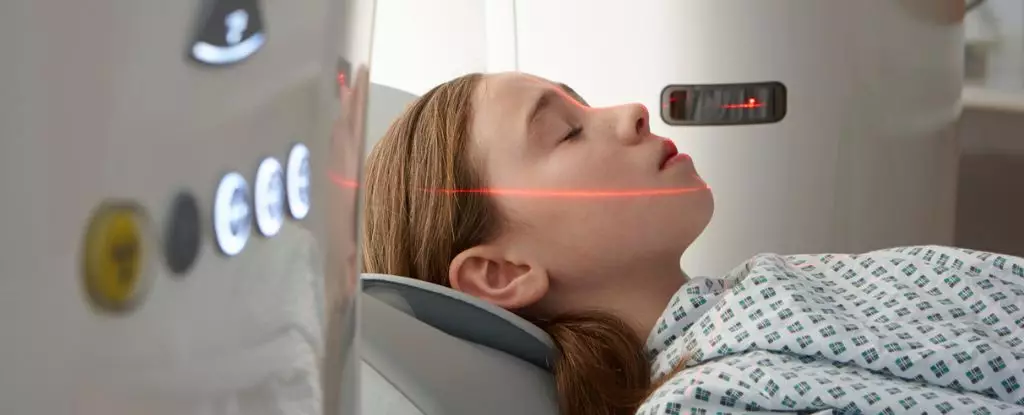

In recent years, the utilization of computed tomography (CT) scans in the United States has skyrocketed, highlighting an urgent question in the medical community: How do we balance the undeniable benefits of this technology against the potential health risks it may pose? The increase in CT examinations—over 30% since 2007—begs a closer examination of the implications of these diagnostic tools. While the promise of saving lives through early detection of critical health issues is enticing, it becomes crucial to scrutinize the underlying consequences of widespread radiation exposure.
This rapid growth in CT scan usage is indicative of a broader trend within modern medicine, where advanced imaging technologies are becoming staples in diagnostic procedures. The efficiency and clarity offered by CT scans often lead physicians to rely on them more heavily. However, the very aspect that makes CT scans incredibly beneficial—their ability to provide detailed insights—also raises questions about the cumulative effects of ionizing radiation, which have sparked concerns among scientists and health professionals alike.
Despite the advanced capabilities of CT scans, there is a troubling dialogue emerging about their association with cancer risks. Current estimates suggest that even though the individual risk remains low, the cumulative effect of billions of scans may potentially lead to horrendous outcomes. The projection of 103,000 new cancer cases, as suggested by epidemiologists, forces medical professionals and patients to weigh the convenience of CT imaging against its darker implications.
It’s worth noting that the increased incidence of cancer linked to low doses of radiation is primarily based on theoretical assessments rather than direct, conclusive evidence. While high levels of radiation are conclusively tied to increased cancer risks through various studies—including exposure to atomic bombs—the correlation for low-dose exposure is still nebulous. This uncertainty ultimately presents a moral quandary in the medical community regarding when and whether to employ such imaging technologies.
As the debate around the risks of CT scans intensifies, attention is drawn to the fact that certain groups may be more susceptible to the negative consequences of low-dose ionizing radiation. For instance, children and adolescents—a demographic that increasingly undergoes these scans—show higher estimated lifetime cancer risks than adults. The implications of this finding necessitate a reevaluation of guidelines surrounding the use of CT imaging in younger populations.
The concern is particularly acute for infants receiving CT scans, who may face increased risks for thyroid cancers as they grow. This raises additional questions surrounding the ethical considerations of subjecting vulnerable populations to diagnostic procedures that may carry potential long-term health implications.
While the risks associated with CT scans cannot be dismissed, it is essential to recognize their invaluable role in modern medicine. The ability to detect injuries or diseases that may not be otherwise visible is a testament to technological advancement. Health professionals, therefore, are tasked with the responsibility of ensuring the prudent use of CT scans. The focus should be on determining when such imaging is clinically justified, which may involve exploring alternative diagnostic methods that do not require radiation exposure.
Experts advocate for a cautious but balanced approach to the offerings of medical imaging. As medical understanding continues to evolve through ongoing research, healthcare providers must remain vigilant and informed about the potential risks of these technologies. The commitment to reducing unnecessary exposure stands as a shared responsibility between practitioners and patients alike.
The discussion surrounding the ramifications of CT scans necessitates more rigorous research and the formulation of robust policies to safeguard public health. Long-term studies exploring the implications of low-dose ionizing radiation are essential to reframing our understanding of its safety profile. Additionally, teaching the public about the risks associated with diagnostic imaging can lead to more informed decisions and potentially curb the trend of overutilization.
Advocates for responsible imaging practices argue that there must be a concerted effort to focus on patient education, ensuring that individuals understand not only the benefits but also the potential risks of diagnostic procedures. This balanced awareness can help foster a culture of informed consent, allowing patients to actively participate in their healthcare decisions.
The growing body of evidence surrounding the risks of CT scans emphasizes the necessity of a cautious approach to medical imaging. While it is critical to harness the benefits of technology that enhances diagnostic capabilities, acknowledging the darker possibilities lurking beneath the surface is equally vital in securing better health outcomes for future generations. A more engaged conversation about these issues will ultimately lead to an improved understanding of how we can use such powerful diagnostic tools responsibly.
Rogue waves have long been a subject of fascination and terror in maritime lore. These…
As the world grapples with public health challenges, especially those posed by infectious diseases, the…
The Sombrero Galaxy, also known as Messier 104, embodies a breathtaking blend of spirals and…
In recent advances in quantum electronics, a groundbreaking discovery leveraging the concept of kink states…
In the intricate tapestry of nature, ice often exists in a delicate balance with liquid…
In an astonishing event that captured global attention, a rogue object from beyond our Solar…
This website uses cookies.